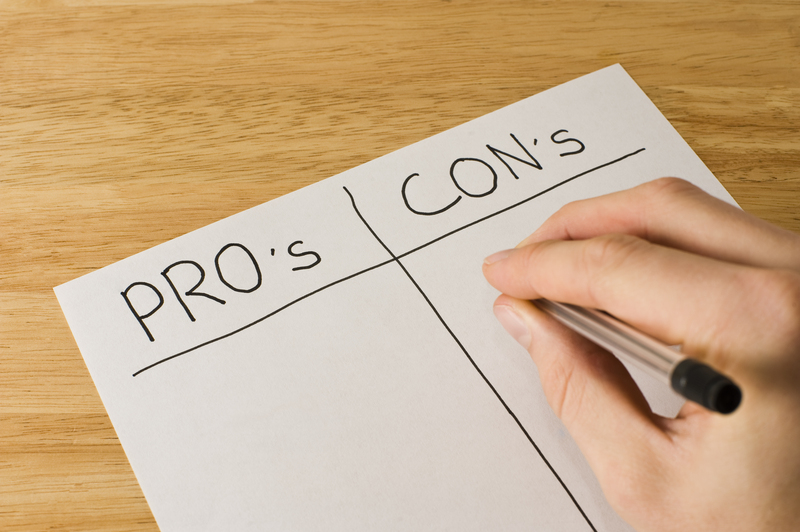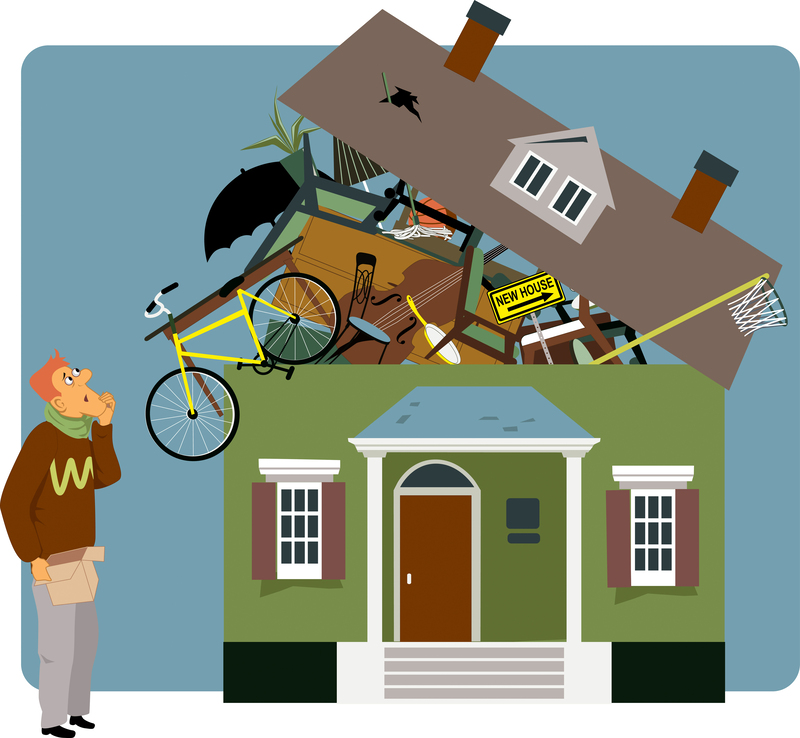Moving Your Bed and Mattress: Step-by-Step Insights
Posted on 30/05/2025
Moving Your Bed and Mattress: Step-by-Step Insights
Moving to a new home comes with its own set of logistical challenges, and one of the most crucial--yet often overlooked--aspects is safely moving your bed and mattress. Whether you're relocating across town or to a new state, ensuring your sleeping setup arrives in top condition is essential for a good night's rest in your new place. In this article, we offer step-by-step insights and practical tips on moving your bed and mattress efficiently, securely, and with the least amount of hassle.

Why Proper Bed and Mattress Moving Matters
Your bed and mattress are significant investments in your comfort and well-being. Improper handling during a move can lead to:
- Damage to bed frames, headboards, slats, or mattress material
- Increased wear and tear, shortening the lifespan of your mattress
- The risk of stains, tears, or moisture damage to your mattress cover or foam
- Health concerns from accumulated dust or allergens if not properly wrapped
By following the steps below, you can ensure your bed and mattress move goes smoothly--and that you continue to enjoy restful sleep in your new home.
Preparing to Move Your Bed and Mattress
Gathering Necessary Supplies
To conduct a safe and uncomplicated bed and mattress move, assemble the following supplies in advance:
- Mattress Bags or Mattress Moving Covers - Protects against dirt, moisture, and physical damage.
- Moving Blankets - Perfect for shielding both the bed frame and mattress during transit.
- Stretch Wrap or Bubble Wrap - Especially important for delicate parts or upholstered headboards.
- Screwdrivers, Allen Keys, and Wrenches - For disassembling the bed frame.
- Packing Tape - For securing covers or boxes.
- Labels and Marker - To organize hardware and bed components.
- Furniture Dollies or Straps - For moving heavier or bulkier items with ease.
- Zip Bags or Small Boxes - To hold screws, bolts, or hardware safely.
Clearing the Area
Before you start moving your bed and mattress, make sure the area is tidy and you have enough room to work. Remove bedside tables, lamps, rugs, or anything that could trip you as you lift and disassemble pieces.
Step-by-Step Guide: Moving Your Bed
1. Strip the Bedding and Mattress
Remove all sheets, comforters, pillowcases, and mattress toppers. Launder them if possible and pack them separately. This step will ensure that your bedding isn't damaged or lost during the move.
2. Disassemble the Bed Frame
To move your bed frame safely, follow the manufacturer's instructions for disassembly if available. This might include removing the mattress, slats, and side rails. Organize screws and bolts into a labeled zip bag to avoid losing anything--tape this bag to one of the frame's larger components for easy access.
- Take detailed photos as you disassemble for easier reassembly.
- Keep all small hardware pieces together.
3. Protect the Bed Frame Components
Wrap parts in moving blankets, bubble wrap, or stretch wrap--this is especially important for wood and upholstered pieces to prevent scratches or dents. Securely tape if needed but avoid placing tape directly on finished surfaces, as it might cause damage.
4. Prepare the Mattress for Moving
Moving a mattress poses unique challenges due to its size, weight, and flexibility. To ensure the mattress arrives in perfect condition:
- Slide it into a mattress bag or moving cover to protect against dust and moisture.
- Seal the bag thoroughly using packing tape.
- If you don't have a mattress bag, use moving blankets or plastic sheeting. Never leave the mattress exposed in the moving truck.
5. Lifting and Carrying Your Mattress Safely
Mattresses are often heavier and more unwieldy than they appear. Always move a mattress with at least one other person, and use proper lifting techniques:
- Bend at your knees, not your waist.
- Grip the mattress edges firmly and move in coordinated movements.
- If you have to navigate stairs or tight corners, carry the mattress upright for better maneuverability.
- Consider using moving straps for larger or heavier mattresses.
6. Transporting the Bed and Mattress Securely
Whether you're moving your bed and mattress in a personal vehicle or a rented moving truck, secure them firmly to prevent shifting during transit:
- Lay the mattress flat if possible--never fold or bend memory foam or spring mattresses, as this may cause internal damage.
- If using an open-bed vehicle, double-wrap the mattress for weather protection and tie it down with ropes or straps.
- Arrange bed frame components to minimize movement, and pile heavier items below lighter ones.
_Remember_: A flat, secure position is best for mattress transport. Significant bending or incorrect stacking can permanently damage your mattress structure and comfort.
Step-by-Step Guide: Moving Your Mattress
Special Considerations for Different Mattress Types
- Memory Foam or Latex Mattresses: These need particular care, as bending or over-folding can weaken or crack the foam. Always keep these flat and well-supported.
- Innerspring Mattresses: Try not to store them or move them on their sides for extended periods. Secure them in a flat position.
- Hybrid Mattresses: Apply both the above suggestions for maximum safety.
- Box Springs: Wrap as you would a mattress and avoid stacking heavy items on top to keep the structure intact.
Cleaning Before You Move
Dirt and allergens can accumulate in your mattress over time. Moving is the perfect opportunity to give your mattress a deep clean:
- Vacuum the entire surface on both sides.
- Spot clean stains with a gentle upholstery cleaner and let dry completely.
- Use baking soda to deodorize if needed.
Allow the mattress to air out and dry before wrapping to avoid trapping moisture, which causes mildew or odors.
Storing Mattresses Temporarily
If your bed and mattress will be in storage before arriving at their new home, ensure:
- Mattress is always laid flat, not upright (to prevent sagging or deformation).
- Stored in a climate-controlled environment to avoid moisture issues.
- Poor packaging, such as thin plastic, can trap moisture and promote mold growth.
Reassembling Your Bed After the Move
Rebuilding the Bed Frame
Once you've arrived, unbox and unwrap each part of your bed frame. Refer to the photos you took during disassembly or the manufacturer's guide.
- Lay out each part and organize hardware.
- Tighten all bolts and screws firm enough for stability--but avoid over-tightening, which may crack wood.
- Double check the foundation or slats are well-supported before placing your mattress.
Setting Up the Mattress
Remove all protective wrapping and inspect your mattress for any damage or moisture before placing it on the frame. Allow the mattress to air for a few hours, especially if it was in storage or transit for a long duration.
Final Touches
- Replace clean bedding and mattress protectors.
- Test your bed's stability by gently rocking it and tightening hardware if needed.
- Enjoy a well-deserved, comfortable rest in your new space!
Expert Tips for Moving Your Bed and Mattress
- Recruit Help: Beds and mattresses are typically too large and cumbersome for one person. Ask a friend or hire movers for assistance, especially with king-size beds or heavy memory foam mattresses.
- Label Everything: Mark all bed frame components and hardware bags for easy reassembly.
- Protect Floors: When moving the bed out or into your home, use furniture sliders or blankets to avoid scratches on hardwood floors.
- Check for Damage: Before and after your move, inspect your mattress and bed for any new tears, cracks, or hardware issues.
- Insurance: If you have insurance or are using a moving company, confirm that your bed and mattress are covered for any accidental damage.
- Consider Professional Movers: For large or complex beds, especially those with adjustable bases, it might be best to hire skilled movers with the right equipment.
Common Mistakes to Avoid When Relocating Your Mattress and Bed
- Dragging the Mattress: Lifting is always preferable. Dragging can dirty, tear, or compress sensitive mattress materials.
- Ignoring Weather Conditions: Rain and moisture can easily seep through mattress covers. Choose a dry day for your move or double-wrap in waterproof materials.
- Forgetting to Measure: Always measure doorways, stairwells, and your new bedroom before moving to ensure your bed and mattress fit easily.
- Skipping Proper Wrapping: Don't skimp on protective materials. A well-wrapped mattress and bed frame arrive cleaner and safer.
- Improper Stacking in Truck: Never stack heavy boxes or furniture on top of a mattress.

FAQs About Moving Beds and Mattresses
Can you fold a mattress for moving?
It depends on the mattress type. Some thin foam mattresses can be gently folded, but most memory foam, latex, hybrid, and spring mattresses should always remain flat to avoid internal damage.
What's the best way to clean a mattress before moving?
Vacuum both sides, spot clean stains with appropriate products, sprinkle baking soda for odors, and let the mattress air dry fully. Never wrap a damp mattress for transport.
Should I move my mattress myself or hire movers?
It depends on your budget, the size and weight of your mattress, and how comfortable you are lifting heavy objects. For large or valuable beds and mattresses, using professional movers often ensures better safety and peace of mind.
Conclusion: Stress-Free Bed and Mattress Moving
Moving your bed and mattress doesn't have to be stressful or complicated. By following these detailed steps, preparing ahead of time, and taking advantage of the right supplies, you can protect your investment and set yourself up for comfortable sleep in your new home. Don't underestimate the importance of carefully moving your mattress and bed frame; a little effort now ensures years of rest to come. Safe and happy moving!





